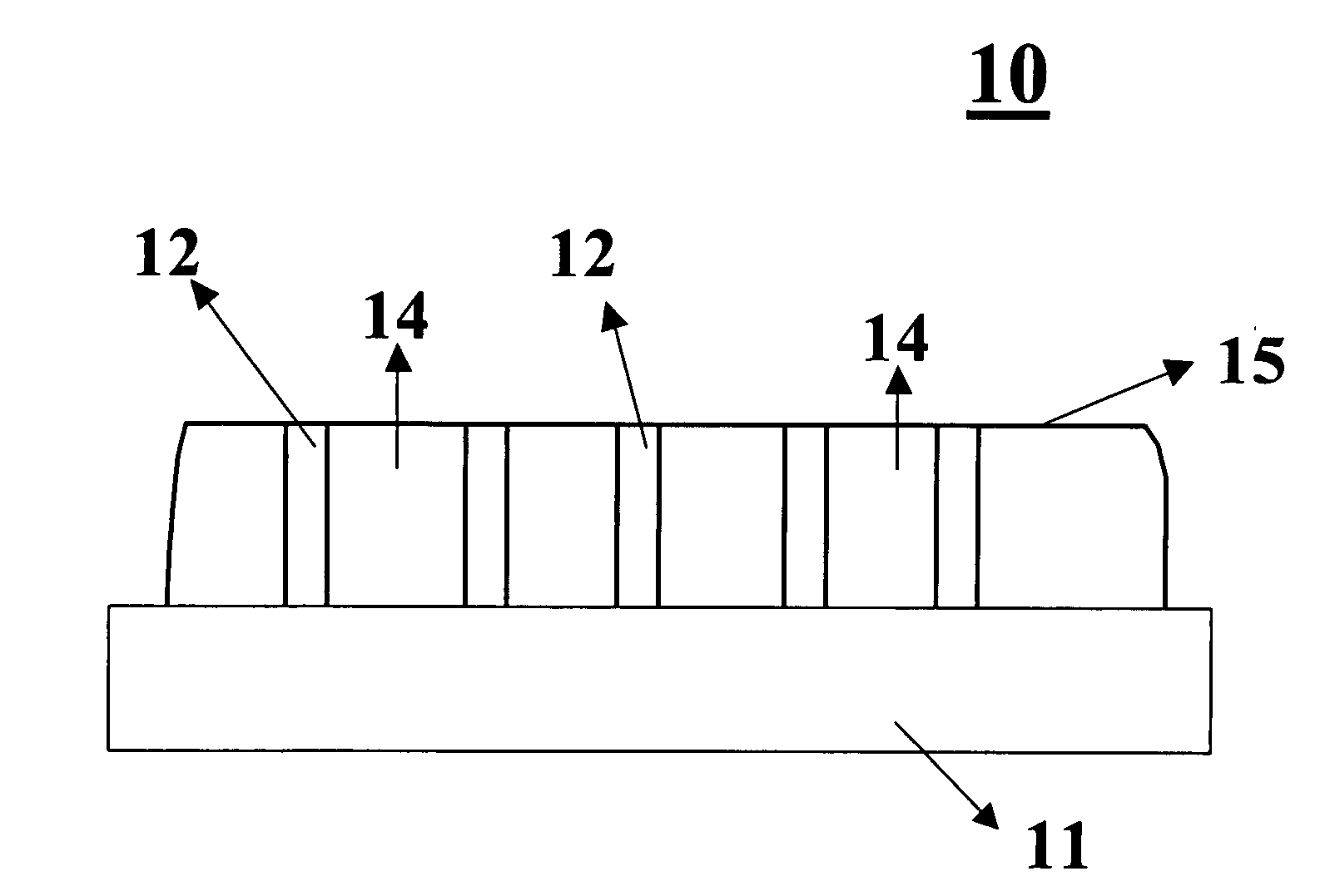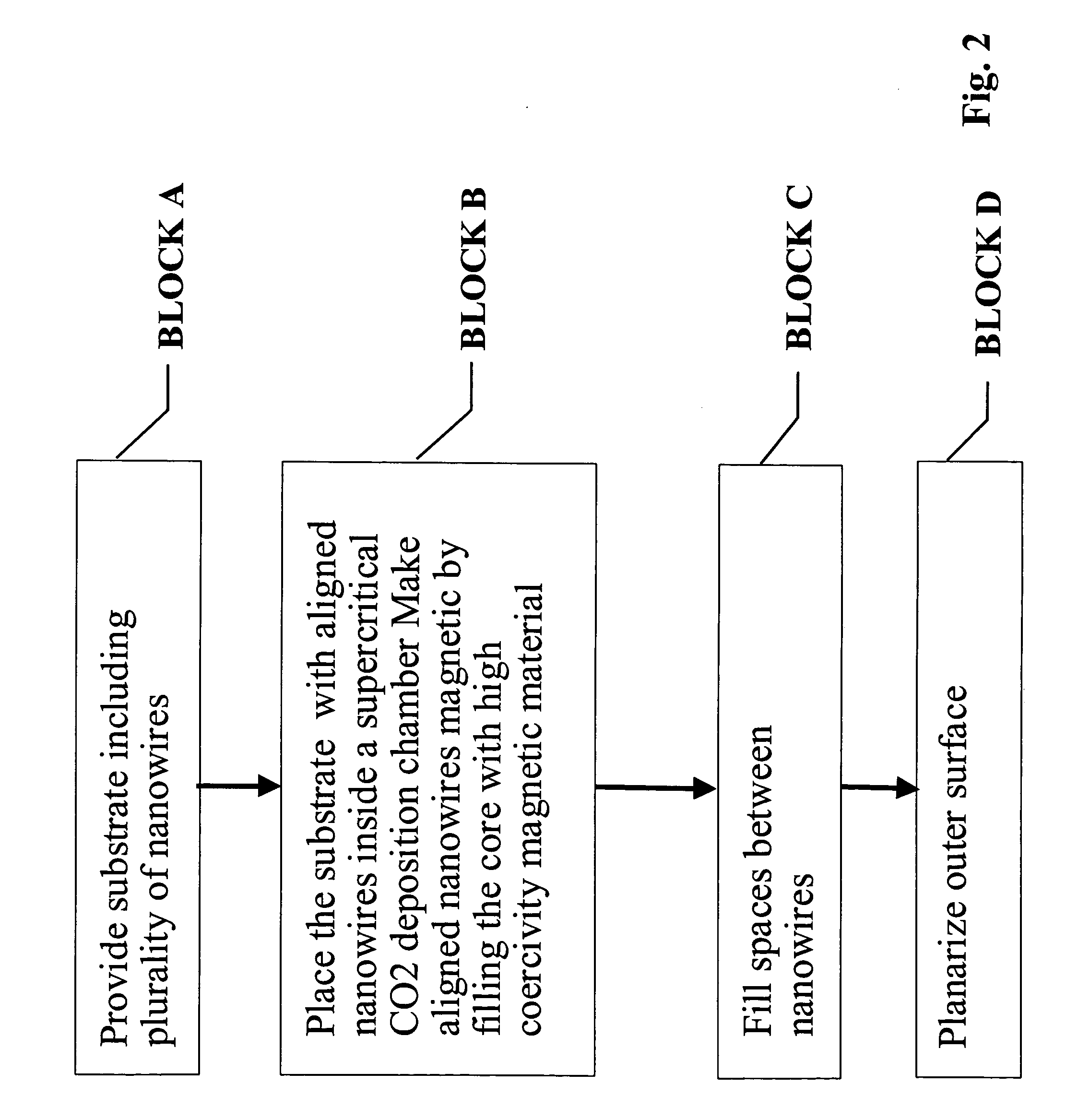Ultra-high-density magnetic recording media and methods for making the same
a magnetic recording media and ultra-high density technology, applied in the field of high-density information storage media and methods for making the same, can solve the problems of unduly limited magnetic recording density, unstable magnetization, and high cost of current electron beam lithography with a single-beam writing process, and achieve high density recording media, high coercivity, and ultra-high density
- Summary
- Abstract
- Description
- Claims
- Application Information
AI Technical Summary
Benefits of technology
Problems solved by technology
Method used
Image
Examples
Embodiment Construction
[0029] This invention describes the structure and fabrication of recording media particularly useful for high-density recording. By “high-density recording”, is meant recording at 50-nanometer information bit size or less, and preferentially 20 nanometer bit size or less.
[0030] Referring to the drawings, FIG. 1 illustrates an exemplary magnetic recording medium 10 comprising a substrate 11, a plurality of magnetic nanowires 12 disposed substantially perpendicular to the substrate and a nonmagnetic filler material 14 disposed in spaces between the magnetic nanowires. (The term “nanowires” is used herein generically to encompass both true nanowires (solid cores) and nanotubes (hollow cores)). The magnetic nanowires 12 can comprise nanowires of magnetic material or nonmagnetic nanowires, such as carbon nanotubes, nanosilicon fibers, or nanometal wires, that are coated with magnetic material. It can also include nanotubes that are filled with magnetic material. The medium 10 is advanta...
PUM
| Property | Measurement | Unit |
|---|---|---|
| size | aaaaa | aaaaa |
| size | aaaaa | aaaaa |
| diameter | aaaaa | aaaaa |
Abstract
Description
Claims
Application Information
 Login to View More
Login to View More - R&D
- Intellectual Property
- Life Sciences
- Materials
- Tech Scout
- Unparalleled Data Quality
- Higher Quality Content
- 60% Fewer Hallucinations
Browse by: Latest US Patents, China's latest patents, Technical Efficacy Thesaurus, Application Domain, Technology Topic, Popular Technical Reports.
© 2025 PatSnap. All rights reserved.Legal|Privacy policy|Modern Slavery Act Transparency Statement|Sitemap|About US| Contact US: help@patsnap.com



